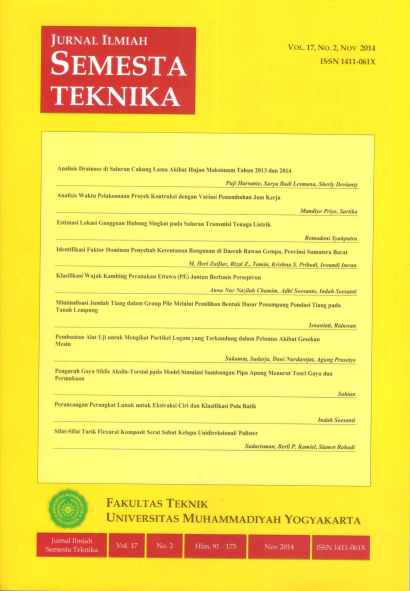Analisis Drainasi di Saluran Cakung Lama Akibat Hujan Maksimum Tahun 2013 dan 2014
DOI:
https://doi.org/10.18196/st.v17i2.416Abstract
Flooding is an annual disaster for Indonesia. Jakarta is a city that each year nearly always experienced by flooding. The rapid development made the impervious area dropped drastically. Micro drainage is not capable of passing the volume of direct runoff. It makes many regions in Jakarta experienced by floodwaters. The aim of this research is to analyze the micro drainage capacity in Cakung Lama River. Simulations are performed with HEC-RAS 1D. The flood data is maximum rainfall on 2013 and 2014. Two scenarios normalization is done for reducing the inundated area around the river. Based on the simulation results, the existing conditions are not able to accommodate the discharge due to maximum rainfall 2013 dan 2014. Normalization of the river will give good results if the width of the river 5 m and the depth of the river is 3 m.
Downloads
Published
How to Cite
Issue
Section
License
Semesta Teknika is licensed under a Creative Commons Attribution 4.0 International License.
Authors who publish with this journal agree to the following terms:
- Authors retain copyright and grant the journal right of first publication with the work simultaneously licensed under a Creative Commons Attribution License that allows others to share the work with an acknowledgement of the work's authorship and initial publication in this journal.
- Authors are able to enter into separate, additional contractual arrangements for the non-exclusive distribution of the journal's published version of the work (e.g., post it to an institutional repository or publish it in a book), with an acknowledgement of its initial publication in this journal.
- Authors are permitted and encouraged to post their work online (e.g., in institutional repositories or on their website) prior to and during the submission process, as it can lead to productive exchanges, as well as earlier and greater citation of published work (See The Effect of Open Access).









